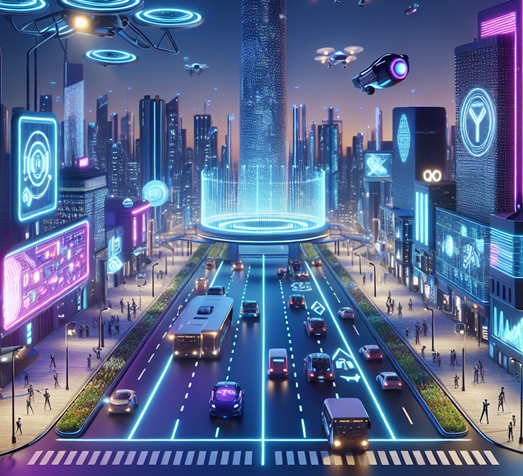The world has seen a significant shift in how businesses operate, with artificial intelligence (AI) playing a pivotal role in this change. The restaurant industry has not been left behind. From small to large eateries, AI is gradually becoming a crucial part of operations. We are living in an era where artificial intelligence in restaurants is not just a concept, but it is indeed a reality that is reforming the dining experience.
AI is a broad term that encompasses several technologies that can be applied in diverse ways, ranging from routine task automation to providing customized and personalized recommendations to diners.
The use of AI in the restaurant industry is driven by the demand to improve operational efficiency, enhance customer experience, and gain a competitive edge.
The Role of Artificial Intelligence in Revolutionizing the Dine-In Experience
AI-Powered Assistance:
AI-powered bots and virtual assistants are making it easier for customers to place and trace orders. These AI tools can understand and respond to customer queries. This not only improves customer convenience but also reduces the workload for the staff.
Operational excellence – Data-based Insights & Predictions:
AI-powered predictive analytics tools can help restaurants forecast demand, improve inventory and their supply chain efficiency. AI can also assist in automating tasks such as table reservations, billing, and even food preparation, thereby freeing up restaurant staff to focus on more value-adding tasks.
“AI is enabling restaurants to become more intelligent and responsive to the needs of their customers.”
In a highly competitive industry like the restaurant business, being able to offer a unique dining experience can be a game-changer.
Implementing AI in Restaurant: Things to Consider | Challenges & Solutions
As beneficial as AI can be in the restaurant industry, successful implementation requires wise planning and consideration. First and foremost, have clear goals. What problems are we trying to solve by having AI? Do we want to improve operational efficiency, enhance customer experience, or both? Having clear goals will clearly define AI implementation strategy and can help measure success.
Despite its numerous benefits, implementing AI in restaurants is not without challenges. The main challenge is the cost of acquiring and maintaining AI technology. However, this can be mitigated by implementing cost-effective solutions and focusing on specific areas where AI can deliver the most value.
AI can deliver significant advantages, but it’s important to ensure that the cost and below-par utilization don’t outweigh the benefits.
AI’s impact on staff should also be considered. AI can automate tasks, but it doesn’t mean that humans are no longer needed. On the contrary, staff will play a crucial role in ensuring successful implementation. Therefore, it’s important to involve them in the implementation process and provide them with the necessary training and support.
Another challenge is the lack of technical expertise. AI implementation requires a certain level of technical knowledge and skills. To overcome this challenge, restaurants can partner with AI service providers or hire AI experts.
Finally, there is the challenge of data privacy. AI relies on customer data to function, and this raises concerns about data privacy and security. To address this, restaurants must ensure that they comply with data privacy laws and implement stringent security measures.
Case Studies: Successful Use of AI in Restaurants
Several restaurants have successfully implemented AI and are reaping the benefits. For instance, Domino’s Pizza uses AI to streamline its ordering process. Customers can place orders via an AI-powered chatbot that can understand and respond to their queries. This has not only improved customer convenience but also increased sales.
Starbucks uses AI to personalize the customer experience. By analyzing customer data, Starbucks is able to provide personalized menu recommendations and send personalized offers and promotions. This has resulted in increased customer satisfaction and loyalty.
In 2019, McDonald’s started using predictive AI technologies and forecasting orders made in its drive-thrus. By analyzing historical data about customer behavior “what customers ordered and when”, McDonald’s stores were able to predict traffic and periodic data. By predicting orders, the stores using this technology were able to reduce wait times by 30 seconds on average. This is quite a feat, considering the fact that drive-thru ordering experiences typically only last a few minutes.
These case studies demonstrate the potential of AI in revolutionizing the restaurant industry and highlight the benefits that restaurants can reap from implementing AI.
Future of Artificial Intelligence in the Restaurant Industry
The future of AI in the restaurant industry looks promising. As AI technology continues to evolve, it’s likely to become an even more integral part of restaurant operations. We can expect to see more AI-powered tools being developed for the restaurant industry, ranging from AI-powered kitchen appliances to customer service bots.
Moreover, AI is likely to play a bigger role in personalizing the dining experience. By harnessing the power of big data and machine learning, restaurants will be able to create more personalized and unique dining experiences for their customers.
In addition, AI will continue to help restaurants improve their operational efficiency. Whether it’s managing inventory, forecasting demand, or automating routine tasks, AI will continue to deliver significant benefits for restaurants.














